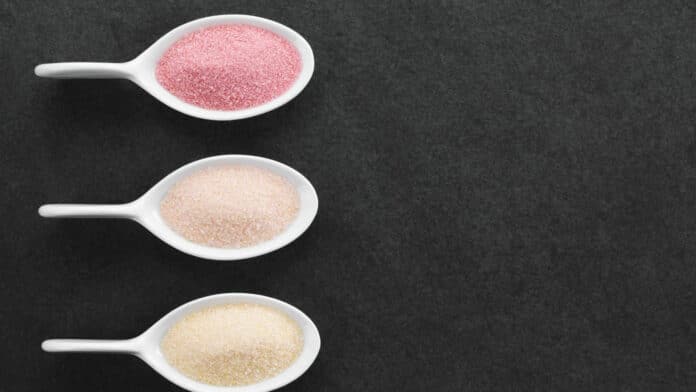Non-nutritive sweeteners (NNS), also known as sugar substitutes or artificial sweeteners, are supposed to deliver all the sweetness of sugar without calories. It is commonly integrated into the human diet and presumed to be inert. However, animal studies suggest they may impact the microbiome and downstream glycemic responses.
A new study by the Weizmann Institute of Science accessed the impact of artificial sweeteners on humans and their microbiomes. They found that contrary to previous belief, such sweeteners are not inert: They have an impact on the human body that vary significantly among individuals. What’s more, some can alter human consumers’ microbiomes in such a way that they can change a person’s blood sugar levels.
Scientists examined approximately 1,400 eligible participants for this study, choosing 120 who were found to avoid any meals or beverages with artificial sweeteners. Six groups were then formed out of the volunteers. Participants in four of the groups received sachets containing one of the following sweeteners: saccharin, sucralose, aspartame, or stevia, each in quantities that were less than the recommended daily intake. The other two groups served as controls.
According to the study’s findings, the microbiome and the small molecules that people’s gut microorganisms emit into their blood were discovered to have changed after two weeks of taking all four sweets. Each sweetener had a different effect.
Additionally, they discovered that two sweeteners, saccharin and sucralose, dramatically changed the recipients’ glucose tolerance or proper glucose metabolism. Metabolic illness may then result from such changes. In comparison, neither the microbiome nor glucose tolerance in the two control groups showed any changes.
Prof. Eran Elinav of Weizmann’s Systems Immunology Department said, “The changes induced by the sweeteners in the gut microbes were closely correlated with the alterations in glucose tolerance. These findings reinforce the view of the microbiome as a hub that integrates the signals coming from the human body’s systems and from external factors such as the food we eat, the medications we take, our lifestyle and physical surroundings.”
The scientists transplanted gut microorganisms from more than 40 trial participants into groups of germ-free mice that had never received non-nutritive sweets to see if changes in the microbiome were the cause of decreased glucose tolerance. Several “top responders” (trial participants who showed the greatest changes in glucose tolerance) and several “bottom responders” (those featuring the least changes in glucose tolerance) from each trial group had their transplants collected.
Unexpectedly, recipient mice showed glucose tolerance patterns that closely resembled human donors. Compared to mice who got microbiomes from “bottom responders” and human controls, “top responder” mice showed the most dramatic changes in glucose tolerance.
Scientists next determined how the different sweeteners affected the abundance of specific species of gut bacteria, their function, and the small molecules they secrete into the bloodstream.
Elinav says, “Our trial has shown that non-nutritive sweeteners may impair glucose responses by altering our microbiome, and they do so in a highly personalized manner, that is, by affecting each person uniquely. This variability was to be expected because of the unique composition of each person’s microbiome.”
“The health implications of the changes that non-nutritive sweeteners may elicit in humans remain determined, and they merit new, long-term studies. In the meantime, it’s important to stress that our findings do not imply that sugar consumption, shown to be deleterious to human health in many studies, is superior to non-nutritive sweeteners.”
Journal Reference:
- Jotham Suez et al. Personalized microbiome-driven effects of non-nutritive sweeteners on human glucose tolerance. Cell 185, 18, Sept 01, 2022. DOI: 10.1016/j.cell.2022.07.016
